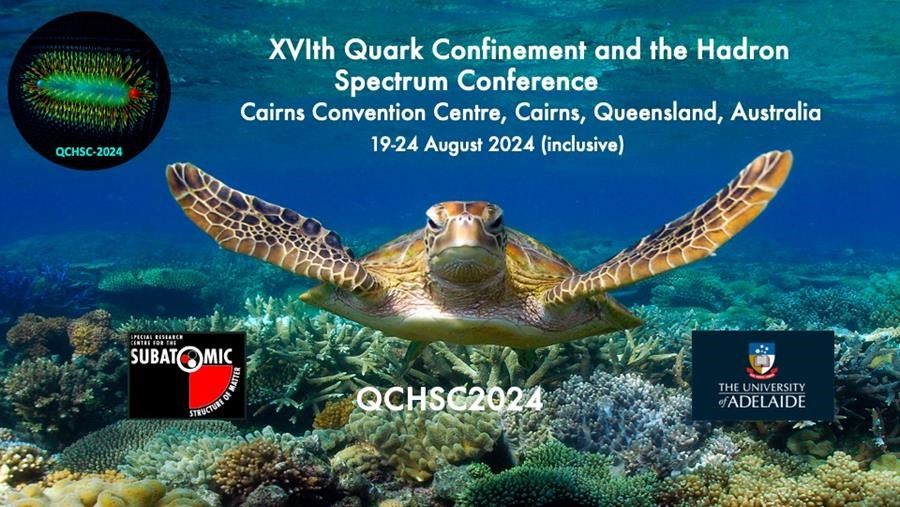Second Circular : XVIth Quark Confinement and the Hadron Spectrum Conference

We are pleased to announce that the "XVIth Quark Confinement and the Hadron Spectrum Conference” will be held between 19-24 August 2024 at the Cairns Convention Centre in Queensland, Australia. Please see the linked conference poster for more details.
Conference web sites
The important dates and the list of conveners for the scientific program, as well as additional information on travel, accommodation and the conference social program can be found at the conference webpage: www.confinement24.org.au and this page is regularly updated. The Indico webpage for the conference can be reached at https://indico.cern.ch/event/1293041/
Scientific Topics
Session A: Vacuum Structure and Confinement
Focus Subsection: “Topology and confinement at borderlines of particle physics and condensed matter: emergent confinement in cold atoms and Anderson criticality in the QCD deconfinement transition”
Session B: Light Quarks
Session C: Heavy Quarks
Session D: Deconfinement
Session E: QCD and New Physics
Session F: Nuclear and Astro-particle Physics
Session G: Strongly Coupled Theories
Session H: Statistical Methods for Physics Analysis in the XXI Century
The important dates and the list of conveners for the scientific program, as well as additional information on travel, accommodation and the conference social program can be found at the conference webpages linked above.
Registration and abstract submission are now open
|
Abstract submission opening:
|
29 January 2024
|
|
Abstract submission deadline:
|
29 April 2024
|
|
Abstract acceptance notification:
|
13 May 2024
|
|
|
|
Registration opening:
|
29 January 2024
|
|
|
|
Deadline for paying early registration fees:
|
03 June 2024
|
|
Registration deadline:
|
01 July 2024
|
|
|
|
Deadline for student support applications:
|
03 June 2024
|
|
Decisions on student support applications:
|
10 June 2024
|
Registration and conference fees
Registration for the conference is through the conference website https://indico.cern.ch/event/1293041/registrations/101933/.
|
Registration fee type
|
Early Registration
|
Late Registration
|
|
|
until 03 June, 2024
|
until 01 July, 2024
|
|
Full
|
AU$1150 ~ €690
|
AU$1300 ~ €790
|
|
Student
|
AU$900 ~ €540
|
AU$1060 ~ €650
|
|
Accompanying Person
|
AU$200 ~ €120
|
AU$200 ~ €120
|
The full and student Conference registrations include: Welcome Reception, Conference Dinner, morning and afternoon teas, lunch on Monday-Friday inclusive, poster session, public lecture and a concert, proceedings, printed programme, and the conference pack. The fee for accompanying persons includes the conference social dinner and welcome reception.
Support for students
There will be a finite capacity for providing partial financial assistance for student attendance at the Conference. Please note that this is indeed limited to students - it is not possible to provide support for general participants. Support is intended only for students who will be making a presentation (either oral or poster).
Applications for student support can be submitted by sending an email to
ayse.kizilersu@adelaide.edu.au and cc it to cssm@adelaide.edu.au by 3rd of June 2024.
Please make sure your email contains the following information:
- email subject line
-
- QCHSC2024 student financial support application - YOUR NAME - YOUR INSTITUTION
- email body
-
- First name
- Surname
- Institution (i.e. your affiliation)
- Submitted talk type (oral or poster)
- Talk/poster title
- Talk/poster abstract
- A reference letter
- Additional information that you feel is relevant
If you apply for a student support please postpone payment of your fee until a decision is made, by 10th June 2024.
Accommodation
Conference participants are requested to book their accommodation individually. A variety of hotel options are available in the Cairns city centre within pleasant walking distance of the conference venue.
Reduced rates have been negotiated for the conference participants and those
special accommodation deals for QCHSC2024 are listed at the conference webpage https://confinement24.org.au/#accommodation
Conference Excursions
We offer three conference excursion options – “Outer Reef”, “Oldest Rainforest”, and “Rainforest with Aboriginal Experience” on Saturday August 24th. As a conference participant, you and your accompanying guests are able to choose one of these three during the registration process.
The details of all excursions and their costs are available on the webpage at https://confinement24.org.au/#conference_excursions and your preferred trip should be selected at registration.
Please note that some options have limited capacity and we apologise in advance if your preferred excursion is not available.
Social Programme
The welcome reception will be held in the evening of Monday, the 19th of August. There will be a public talk and a concert on Tuesday, the 20th of August. The poster session will take place on Wednesday, the 21stof August. The conference dinner will be on Thursday the 22nd of August.
Travel
Cairns Airport is one of Australia’s leading tourist destinations, providing air links to a range of domestic and international locations and is just 7 kilometres from the centre of Cairns.
Cairns Airport has direct flights from Tokyo, Osaka, Singapore, Guangzhou, Shenzhen, Bali, Auckland and Port Moresby. There are also seasonal flights from Shanghai and Seoul.
Detailed travel information can be found on the conference website https://confinement24.org.au/#information
Cancellation Fee and Refund Policy
For delegate registrations:
- Before 10th June, 2024: Full refund minus $30 administration fee;
- After 11th June, 2024: 50% of payment refunded;
- After 4th August, 2024: no refund.
For accompanying person registrations:
- Before 3rd August, 2024: Full refund minus $20 administration fee.;
- After 4th August, 2024: no refund.
Visa information
All travellers to Australia need a valid passport. Visas are required by all visitors travelling to Australia except for New Zealand passport holders.
We advise all international travellers to consult the link below or contact the Australian Consulate in your country to organise the visa that best suits your travel plans.
Visa Information at the Department of Immigration and Citizenship
Depending on the country of issue of your passport, you may be eligible to apply for an eVisitor or ETA via the internet. Please see the following link for more information.
Online Applications at the Department of Immigration and Citizenship
It is also important to note that Australia is an island of immense ecological diversity and takes customs very seriously. To protect its natural ecosystems and agriculture interests, Australia employs strict customs regulations. Organic items such as plants, food, animal products, timber and anything contaminated with dirt or sand may be restricted or even prohibited. Before you set out to Australia, it may be useful to check up on these restrictions at the link below.
Customs Information at the Australian Customs and Border Protection Service
If you require a Letter of Invitation for the conference, please contact us via email.
Please address requests to ayse.kizilersu@adelaide.edu.au and cc it to cssm@adelaide.edu.au
We are looking forward to seeing you at CONFINEMENT2024!
Sincerely yours,
The local organising committee:
Ayse Kizilersu (University of Adelaide, Chair) and Nora Brambilla (TU Munchen, Co-chair)
Anthony W. Thomas (University of Adelaide, Senior Adviser and organiser)
Derek B. Leinweber (University of Adelaide)
Wally Melnitchouk (JLAB & University of Adelaide)
Martin White (University of Adelaide)

